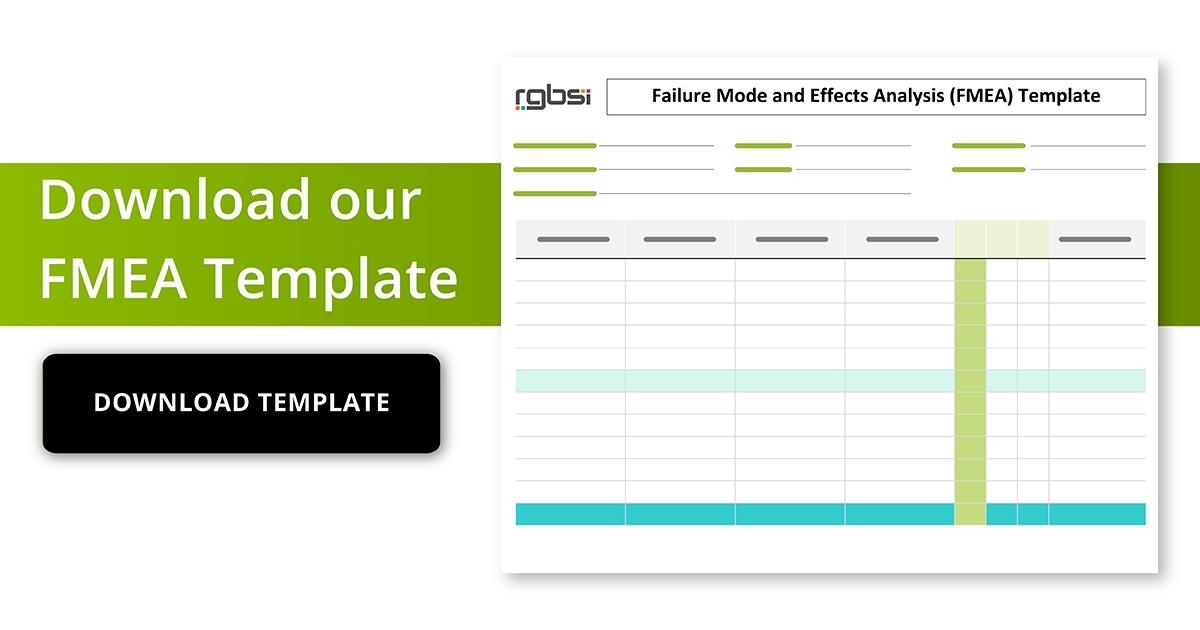
Process Failure Mode Effects Analysis (PFMEA) is used by manufacturers to detect potential failures that are rooted in the physical process of producing a part. Each step of the process is carefully analyzed to identify every possible thing that could go wrong. PFMEA follows a similar process as DFMEA, but looks at failures derived strictly from the process as opposed to design. Planning for mishaps that could occur in the manufacturing process allows preparedness for all scenarios. PFMEA allows manufacturers to build in process safeguards to offset potential failures from occurring.
A PFMEA should be conducted when any of the following occur:
- Modification to an existing process
- Introduction of new technology, equipment, or process steps to production
- Relocation of a process to a new facility
The primary objective of PFMEA is to identify potential failures associated with the manufacturing process such as human error, equipment malfunctions, and production bottlenecks. PFMEA helps identify the sources of failure and its impact on dependent variables through the manufacturing process.
10 Step PFMEA Process
1. Review the process
Identify the process and the comprised steps through a detailed diagram. Identify what each step is intended to accomplish.
2. Potential failure mode(s)
Identify potential failure(s) for each step of the process.
3. Potential effects of failures(s)
If the identified failure(s) were to occur list the impact it would have on production capacity, the next sequential step, or the finished product.
4. Potential causes of failure
Identity the process elements that could trigger potential failures.
5. Assign a severity ranking
Assign a severity ranking 1 (low risk) – 10 (dangerous) to each of the identified potential failures as a consequence of it actually occurring.
6. Assign an occurrence ranking
Assign an occurrence ranking from 1 (least likely) – 10 (extremely likely) to each failure based on the likelihood it will fail.
7. Assign a detection ranking
Assign detection rankings based easiness of detection before failure happens. (1 easy detection – 10 extremely difficult to detect)
8. Calculate the RPN (risk priority number)
S x O x D=RPN 1 (low) – 1000 (high risk). Make a determination if the calculated number is acceptable for the failure being analyzed.
9. Develop an action plan
Detail process controls and detection methods to decrease the RPN and implement them into the process.
10. Recalculate the RPN
Once failure control methods are in place, recalculate the RPN to measure any improvements.
PFMEA allows manufacturing teams to show evidence that potential failure modes and risks have been addressed at the manufacturing process level during PPAP. By using the PFMEA method, manufacturing teams can conduct quality diagnostics to outline preventative measures and record improvements by monitoring RPN comparisons over time.
About RGBSI QLM Solutions
Looking for help with PFMEA, PPAP, or other quality areas? At RGBSI, we provide full service quality lifecycle management (QLM) solutions that optimize manufacturing supply chain initiatives. Organizations within automotive, aerospace, and other engineering segments leverage our expertise to validate, manage, and assess their current processes.











